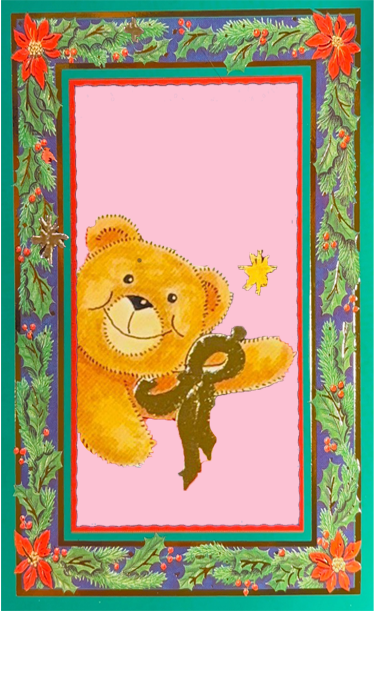CATALOGUE PIECE FOR EMMA PINSENT'S
'FOULS OF THE BEACH'
BY ELEN KLINE
Part one: Brave New Worlds
What does Emma Pinsent’s work Fouls of the beach (2022) and Aldous Huxley’s Brave New World have in common? On a surface level perhaps not much, but on a deeper level, both explore different ways in which humans affect, shape, create and change the world. This change is not always positive or negative, but it is change. Humans are not passively existing, for with each action there is an array of run off effects.
In Pinsent’s Fouls of the beach (2022), new worlds and ecosystems are created through Pinsent’s collection and presentation of found objects. These found objects that are home to both visible and invisible microorganisms include some invasive species moved and introduced because of changing climates and pollution. These new worlds demonstrate that whether we want to acknowledge it or not, humans are a part of the greater ecology, and our actions have a stream of effects flowing on. The bryozoans and barnacles that can be seen on the dune repair mesh and ropes within the installation are a direct result of anthropogenic activities. There is no hiding from the new and changing environments that have resulted from the Anthropocene, and Pinsent invites us to reflect on our involvement and role in this ecological change.
The installation serves as a microcosm. A small collection of mini worlds. It demonstrates just a portion of anthropogenic environmental disruption. Just a portion of plastic waste found on the beach. And just a portion of what can be found on the beaches in the Northern Rivers of New South Wales. The intimate but human-scale installation demands the viewer’s attention and therefore invites us into the microcosm. Finding ourselves as part of the community, we are then encouraged to reflect on our role in ocean ecosystems.
The juxtaposition of organic and man-made, natural and artificial, trash and treasure, again further represents this notion of human involvement. In the installation, plastiglomerates mimic the form of natural rocks but are anthropogenic waste, comprised of plastic. There is an intricacy and beauty to them having combined with natural sediments. However, these ‘plastic rocks’ are a result of anthropogenic destruction. By including plastiglomerates in the installation, Pinsent is inviting us to explore the boundaries between natural and man-made. Nestled amongst the plastiglomerates is ‘faux pumice’. Attempting to minimise her environmental footprint, Pinsent creates paper replicas of the pumice unearthed in sand dunes after hazardous weather. The plastiglomerates and ‘faux pumice’ presented together further demonstrate the blur between organic and man-made, trash and treasure.
We often view humans as interacting with the natural environment but forget to notice how the natural world interacts with us. The string and rope that features through Pinsent’s installation serves almost to bind us with the natural world, blurring the binaries of the human and non-human world.
The buckets in the centre of the installation allude to the washing Pinsent took part in at the beginning of her journey collecting ocean material. The water full of microplastic encourages us to question what ‘clean’ means. Washing again represents the human tendency to enforce control over environments. The bryozoans and barnacles have colonised plastic waste as a means of survival; however, they have been removed from their new homes during the ‘cleaning process’. Where do these bryozoans and barnacles belong? The plastic waste in the ocean has displaced them. Through the inclusion of invasive species, Pinsent encourages us to consider both the explicit and less obvious control we hold and attempt to hold over the environment.
The entanglement of organic and inorganic, man-made and natural in an intricate, tactile, and inviting installation, ultimately encourages a care for the environment. Perhaps this care for the environment will stimulate a ‘brave new world’ where environmental sustainability is prioritised to preserve our intricate marine ecosystem. We cannot come up with solutions if we do not know what questions to ask. That is where the strength in Pinsent’s work lies. The large-scale, tactile qualities of the installation demand attention and allow questions surrounding caring for the ocean and the larger environment to be generated.
Part Two: Mini Glossary of organic and inorganic
To explore some of the different worlds and species demonstrated in Fouls of the beach, some technical terms will be discussed here. The different terms allow the diversity of organisms occurring in Pinsent’s work to be illustrated. In turn, this allows us as the audience to better understand the novel worlds depicted in Fouls of the beach. It also helps us to understand Pinsent’s blurring of organic with inorganic, and natural with man-made.
Barnacle: Small crustaceans that stick to the underside of vessels and sea life.[1] Barnacles have been found to attach to plastic material and migrate across the Pacific Ocean.[2] Due to attaching to plastic materials, barnacles ingest microplastics.
Bryozoans: Invertebrates found in marine and freshwater. Like some barnacles, bryozoans are another example of an invasive species that colonises plastic waste in the ocean and ends washed up in a foreign area.[3] Due to attaching to plastic waste, the bryozoans ingest microplastics.
Cyanobacteria: Sometimes referred to as Blue-green Algae (although taxonomically considered bacteria rather than an algae species). Usually microscopic, specific conditions cause visual ‘blooms’ that lead to poor water quality.[4]
Microorganism: Refers to an organism that requires a microscope to be visible. Marine microorganisms are essential for thriving ocean ecosystems, but disruptions of microorganisms can also negatively affect ecosystems (e.g. Cyanobacteria blooms).
Microplastic: Refers to small (less than 5mm dimension) pieces of plastic. Inorganic but like the Cyanobacteria affects water quality. Due to the small size, microplastics are easily available for ingestion causing adverse health effects on marine organisms.[5]
Plastiglomerate: Compressed plastic that mimics the form of rocks. Plastiglomerates form during anthropogenic events (e.g. burning). Through events such as sedimentary transport, plastiglomerates possess textural similarities to natural rocks.[6]
Pumice: A porous type of volcanic rock. Pumice has a sponge like appearance and contemporary researchers are concerned about pumices potential to transport micro-plastics. [7] Pumice also serves as a mode of transport for marine organisms.[8]
[1] Read more about barnacle taxonomy and habitat here: National Oceanic and Atmospheric Administration US Department of Commerce, “What Are Barnacles?,” NOAA's National Ocean Service, March 30, 2016,https://oceanservice.noaa.gov/facts/barnacles.html.
[2] To read more about barnacles and migration via plastic waste see: Whitney Pipkin, “Invasive Species Are Riding on Plastic across the Oceans,” Environment (National Geographic, May 3, 2021), https://www.nationalgeographic.com/environment/article/news-invasive-species-ride-plastic-across-ocean.
[3] To read more about plastic waste and its relationship with invasive marine species see: Science X staff, “Marine Plastic Pollution Could Contribute to the Introduction of Invasive Species,” Phys.org (Phys.org, March 2, 2022), https://phys.org/news/2022-03-marine-plastic-pollution-contribute-introduction.html.
[4] For further reading on Cyanobacteria see: “Cyanobacteria (Blue-Green Algae) and Water Quality,” Cyanobacteria (blue-green algae) (Australian Government Initiative ), accessed November 28, 2022, https://www.waterquality.gov.au/issues/blue-green-algae.
[5]See: Subhankar Chatterjee and Shivika Sharma, “Microplastics in Our Oceans and Marine Health,” Field Actions Science Reports. The journal of field actions (Institut Veolia, March 1, 2019), https://journals.openedition.org/factsreports/5257.
[6] See: Patricia L. Corcoran and Kelly Jazvac, “The Consequence That Is Plastiglomerate,” Nature Reviews Earth &Amp; Environment1, no. 1 (January 2020): pp. 6-7, https://doi.org/10.1038/s43017-019-0010-9.
[7] For more about pumice and relationships between pumice and plastics see: Siriporn Pradit et al., “The First Evidence of Microplastic Presence in Pumice Stone along the Coast of Thailand: A Preliminary Study,” Frontiers in Marine Science 9 (2022), https://doi.org/10.3389/fmars.2022.961729.
[8] See: Jo Khan, “How Underwater Volcanoes Provide Floating Safe Havens for Tiny Marine Life,” ABC News (ABC News, June 3, 2020), https://www.abc.net.au/news/science/2020-06-03/pumice-stone-raft-transporting-marine-life/12278124.

